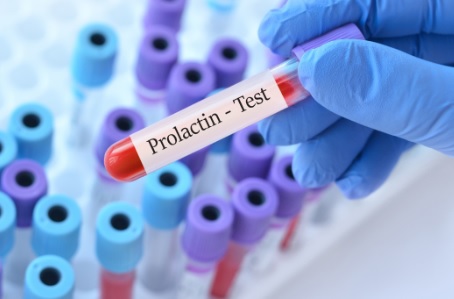Introduction to Prolactin
Prolactin, a hormone produced by the pituitary gland, plays a crucial role in various physiological processes within the human body. Understanding the complexities surrounding prolactin levels, causes, symptoms, and treatments is essential for maintaining overall health and well-being.
What Causes Prolactin Imbalance?
Prolactin levels can be influenced by various factors, including physiological conditions, medications, and lifestyle choices. Medical conditions such as pituitary tumors, hypothyroidism, and kidney disease can lead to abnormal levels. Additionally, certain medications like antipsychotics, antidepressants, and opioids can also affect secretion.
Symptoms of High Prolactin Levels
High levels of prolactin, known as hyperprolactinemia, can manifest in several symptoms, which may vary depending on gender and age. In women, symptoms may include irregular menstrual periods, milk discharge from the breasts unrelated to pregnancy or breastfeeding, infertility, and decreased libido. Men may experience symptoms such as erectile dysfunction, decreased libido, and infertility.
Symptoms of Low Prolactin Levels
Conversely, low levels of, known as hypoprolactinemia, can also have adverse effects on the body. Symptoms may include difficulty breastfeeding, irregular menstrual periods, and in some cases, infertility. Low prolactin levels may also be associated with certain medical conditions such as hypopituitarism or hypothalamic dysfunction.
Diagnostic Procedures for Prolactin Imbalance
Diagnosing imbalance typically involves a combination of medical history assessment, physical examination, and laboratory tests. Blood tests are commonly used to measure levels, with elevated levels indicating hyperprolactinemia. Imaging studies such as magnetic resonance imaging (MRI) may be conducted to identify underlying causes such as pituitary tumors.
Treatment Options for Prolactin Imbalance
The treatment approach for imbalance depends on the underlying cause and severity of the condition. In cases where prolactin elevation is due to medication, discontinuation or dosage adjustment may be recommended. For individuals with pituitary tumors causing hyperprolactinemia, treatment options may include medication to shrink the tumor or surgery to remove it. Hormonal therapy may also be prescribed to manage symptoms and restore hormonal balance.
Lifestyle Modifications to Manage Prolactin Levels
In addition to medical interventions, certain lifestyle modifications may help manage levels and alleviate symptoms. Maintaining a healthy diet, exercising regularly, managing stress, and getting an adequate amount of sleep can contribute to overall hormonal balance. Avoiding excessive alcohol consumption and illicit drug use is also important for regulating prolactin levels.
Fertility and Reproductive Health
In women, elevated levels, a condition known as hyperprolactinemia, can disrupt normal ovulation and menstrual cycles, leading to infertility. Conversely, low levels of can also affect fertility by interfering with the production of other reproductive hormones, such as estrogen and progesterone.
For men, abnormal prolactin levels can impact testosterone production, which is vital for sperm production and sexual function. This imbalance may result in erectile dysfunction, decreased libido, and infertility.
Detecting and Monitoring Prolactin Levels
Regular monitoring of prolactin levels is crucial for identifying any potential imbalances and addressing them promptly. Through simple blood tests, healthcare professionals can assess levels and intervene if necessary.
Clinical Significance
Early detection of prolactin abnormalities allows for timely intervention and management. For individuals experiencing fertility issues, identifying and correcting imbalances can significantly improve their chances of conception. Moreover, monitoring levels is essential for individuals with pituitary disorders, as abnormal levels may indicate underlying conditions such as pituitary tumors.
Treatment and Management
Managing prolactin disorders often involves a multifaceted approach tailored to the individual’s specific needs and underlying causes. Treatment options may include medication to regulate hormone levels, lifestyle modifications, and, in some cases, surgical intervention to address underlying conditions such as tumors.
Medication
Pharmacological interventions, such as dopamine agonists, are commonly prescribed to lower elevated prolactin levels. These medications work by stimulating dopamine receptors in the brain, which inhibits production. Regular medication adherence and monitoring are essential to ensure optimal treatment outcomes.
Lifestyle Modifications
In addition to medication, adopting healthy lifestyle habits can help manage imbalances. This includes maintaining a balanced diet, engaging in regular exercise, managing stress levels, and getting adequate sleep. These lifestyle modifications can positively impact hormone regulation and overall well-being.
Surgical Intervention
In cases where prolactin imbalances are caused by pituitary tumors or other structural abnormalities, surgical intervention may be necessary. Surgical removal of the tumor, known as transsphenoidal surgery, can alleviate pressure on the pituitary gland and restore hormonal balance.
Conclusion
In conclusion, understanding the causes, symptoms, and treatment options for imbalance is essential for promoting optimal health and well-being. By identifying underlying factors contributing to abnormalities and implementing appropriate interventions, individuals can effectively manage their condition and improve their quality of life.
Stay tuned for more news and updates on Infinite Insight Hub!



